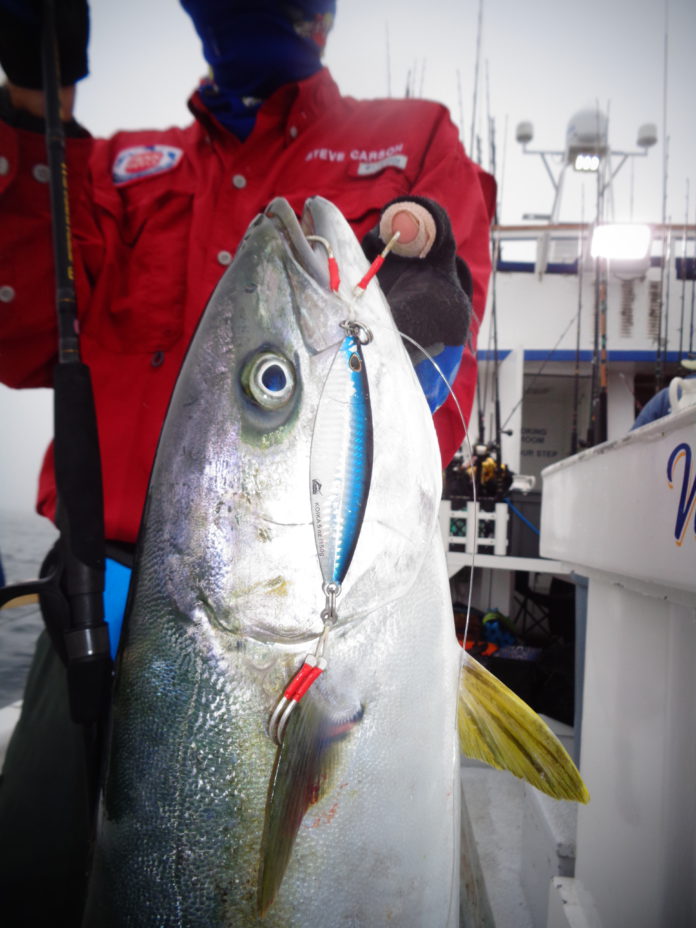
BY STEVE CARSON
Chances are if you have been saltwater fishing this year, you have at least heard about a technique called “Slow-pitch jigging”. The technique has been popular in Indonesian waters for over a decade, and in the simplest terms is very similar to “speed jigging”, but is, well, slower. The system promises to be a way to trigger bites from jaded local fish that have seen everything, and a more sporting way to tackle “average” size pelagics.
First impression
Nathan Winicki is an employee of Pacific Coast Bait & Tackle in Oceanside, who had his first exposure to slow-pitch jigging aboard the Vagabond’s 6-day trip last week. Nathan writes:
“With bluefin as the summer mainstay in San Diego anglers are constantly looking for new methods to fool these wary fish, and slow-pitch may become a new deadly technique. On my last trip out, what I found most impressive was the ability to present my jig at the correct depth for longer than traditional methods and receive more reaction bites. The captain would call out the depth of the main marks and I was able to stay within that strike-zone and work the jig with my rod using a short pumping action rather than a high-speed retrieve. Getting bit is unusual as it momentarily feels like your jig is caught in a washing machine- it rattles around and suddenly your rod doubles over.
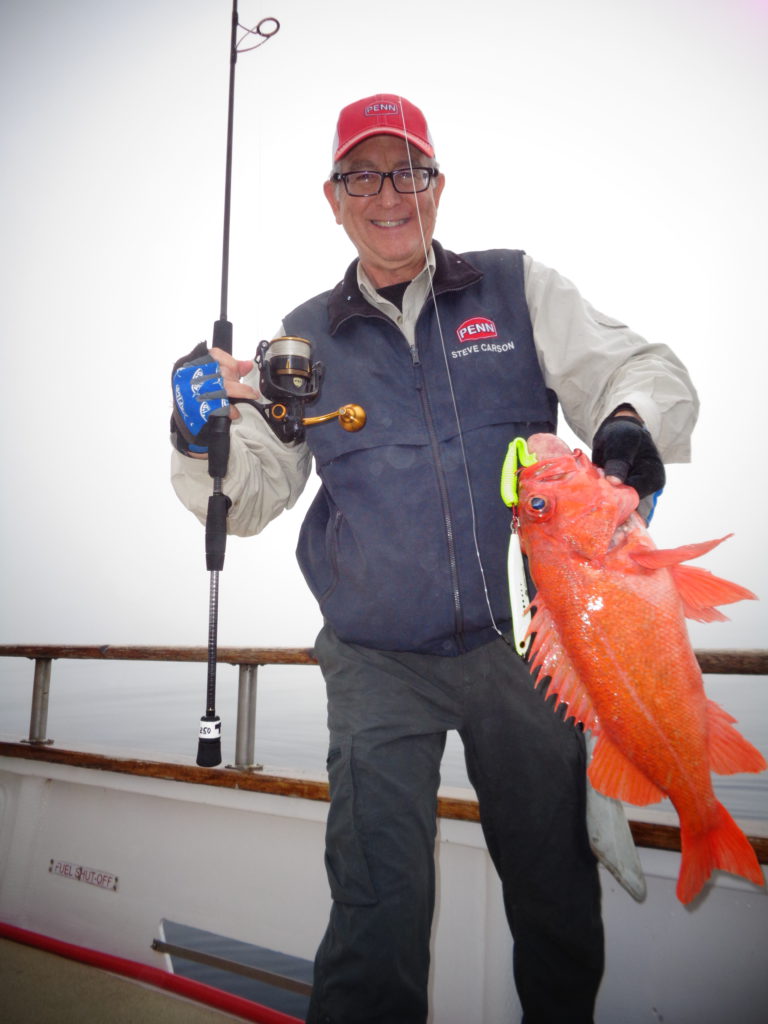
“Fighting a bluefin on such light tackle was an experience on its own. The short parabolic rod bent down to the handle allowing me to feel every pulse or head shake. Keeping constant pressure and pumping with the rhythm of the swells brought the fish to color quickly and we got it on board. Once the fish ate my jig the bottom stinger hooks caught in the corner of the jaw while the top pair latched onto its side. This reduces the number of pulled hooks and gives the angler more confidence while fighting the fish. “
Species
Without a doubt, the most common quarry pursued with the slow-pitch technique will be species like rockfish, lingcod, sculpin, sand bass and the like. It allows reaching depths of over 300 feet with relatively light gear, making even average size rockfish a sporting proposition, and a 10-pound lingcod becomes a true battle.
However, pelagics like yellowtail and school-size bluefin tuna are absolutely on the menu, giving anglers another presentation for reluctant fish. Though light, the tackle is surprisingly rugged and even the PENN Battalion 350 gram rated rod can handle 30-pound class tuna. This writer even landed a 70-pound mako shark on a whippy PENN Battalion 250 gram rod.
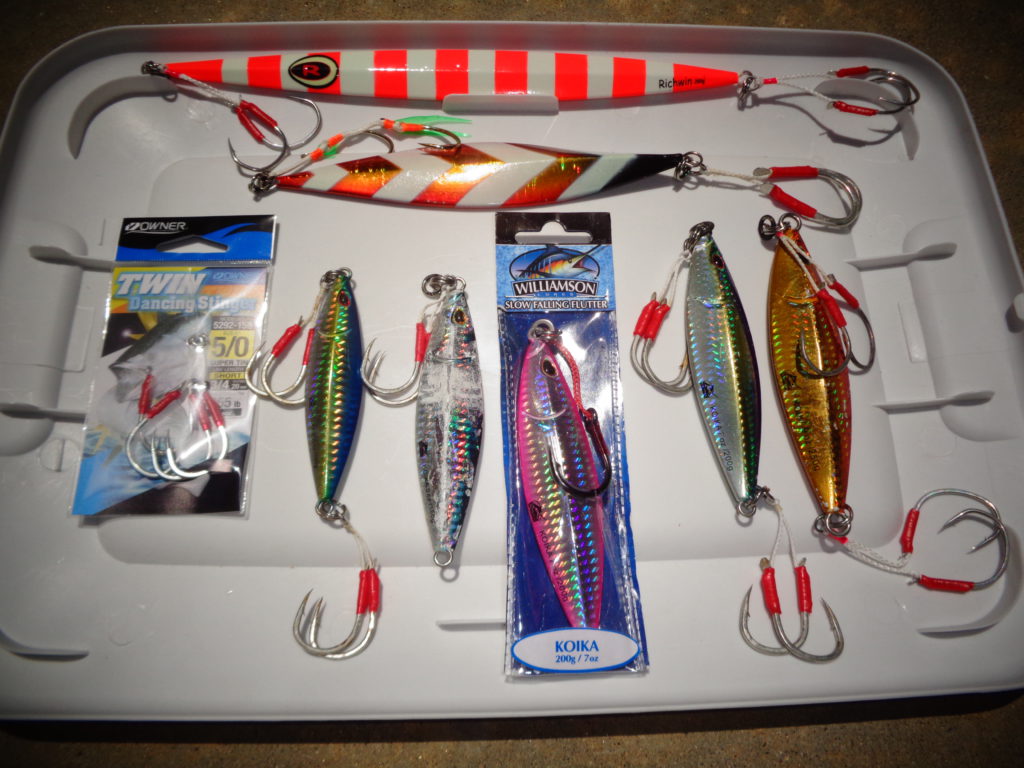
Rods
Probably the most important thing in slow-pitch is matching the jig weight to the rod action. Slow-pitch rods are rated for jig weight as well as line weight. The trick is to lift the rod so that it “loads” from the jig’s weight, and then “unloads,” causing the jig to dart upwards enticingly. If the jig is too light, the rod does not load up enough. If the jig is too heavy, the rod does not unload sufficiently.
Accordingly, the rods will appear relatively “soft” to many SoCal anglers, and it is true that they are not super-efficient at fighting big fish, as the rod’s primary function is to impart the enticing action to the jig which triggers a bite from a reluctant fish. Numerous videos exist on YouTube to give an idea of the ideal motion.
Rods may have an ideal jig weight range, or may have a “max” jig weight, such as 100 grams, 250 grams, 350 grams, 450 grams, etc. The majority of “conventional” slow-pitch rods will be “acid wrapped,” with guides that spiral and end up on the underside of the rod, which prevents twisting in the hands and reduces fatigue.
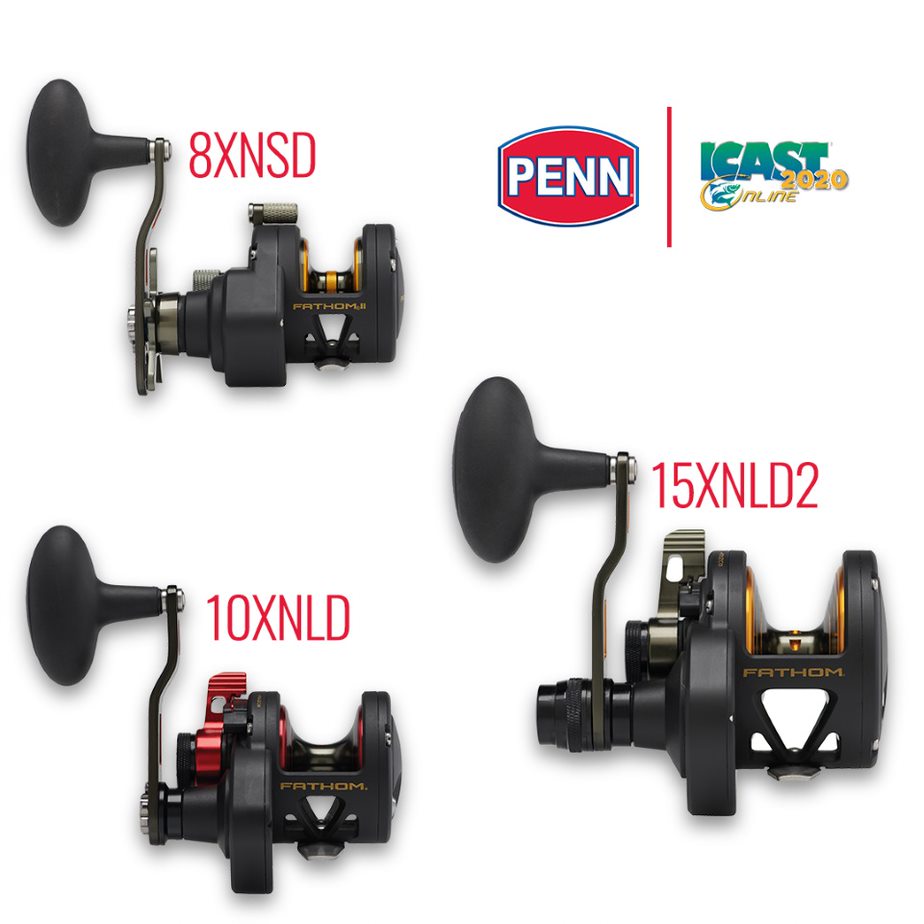
ICAST Show.
Reels
Both conventional and spinning reels can be used for most slow-pitch applications. Some anglers may find that the rhythmic rod lift, drop, and quarter-turn of the reel handle is easier to achieve with a spinning rod. Conventional reels do not need to be super-high speed for this type of jigging, and most anglers do not need 2-speed capability. Most of the fish caught are under 30 pounds, but a handful of anglers using 2-speeds are pushing the limits of what can be caught.
A PENN Battle III 4000 spinning reel holds 260 yards of 20-pound braid and matched with a 250 gram rated rod, it is more than enough to hook up with sand bass, rockfish and lingcod. A PENN Fathom FTH10XNLD lever drag filled with 30-pound braid and matched to a 350 gram rod is perfect for open-water pelagics up to the 30-pound class, and a PENN Fathom FTH15XNLD2 2-speed lever drag filled with 50-pound braid and matched with a 450 gram rod can successfully handle even Alaska-size lingcod, or 30-pound yellowtail near structure.
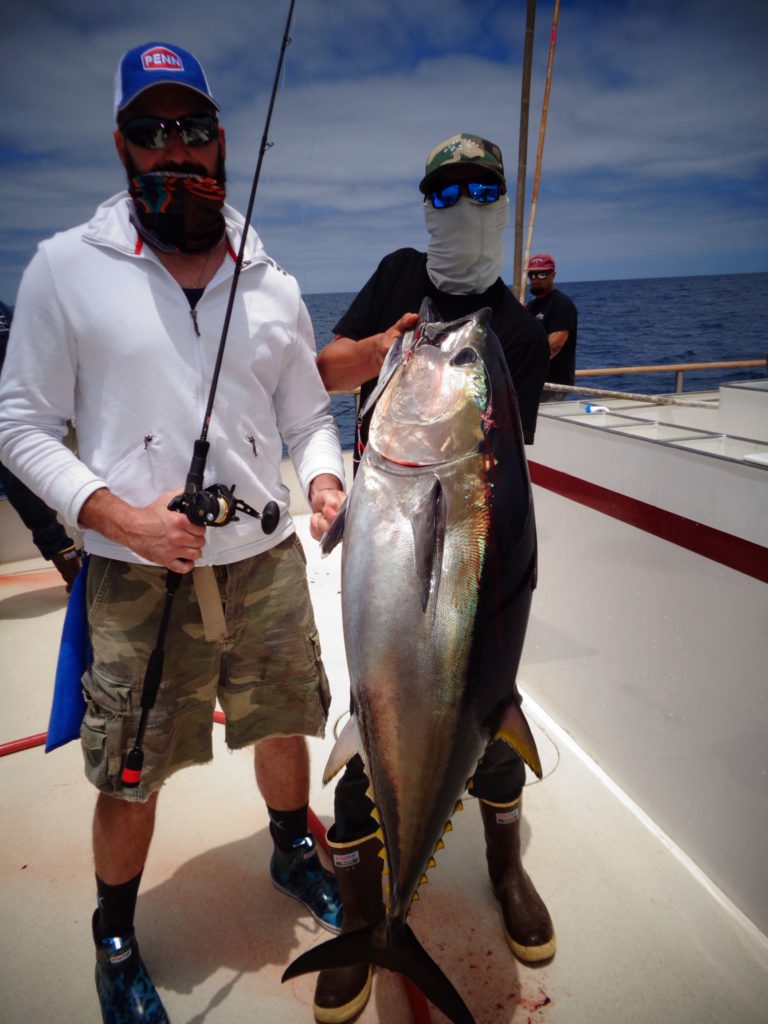
Jigs
The category is expanding rapidly as more anglers try different jig styles. As noted, the jig weight needs to be closely matched to what the rod is rated for. I have done especially well with the Williamson Koika jigs in 100 gram through 250 gram, and they have an excellent fluttering and darting action, while still sinking quickly to the productive depth. A good rule of thumb is that you want the weight to match the depth, so a 100 gram jig for 100 feet of water, and so on. Then I just choose the color I would have chosen anyway for the species being targeted. The Tady TSP jigs also provide a slower fluttering action, and there are times when very long extended jigs draw bites.
Hooks
Hook systems are all over the board, with custom variants for specific conditions being the norm. Most common are a set of “dual” hooks on either the nose or tail, and in many cases, both. Grabby bottom structure may dictate nose hooks only. In areas with numerous mixed-size rockfish, putting a 6-inch Gulp! Grub on a 9/0 single hook at the tail end can help keep the small ones away.
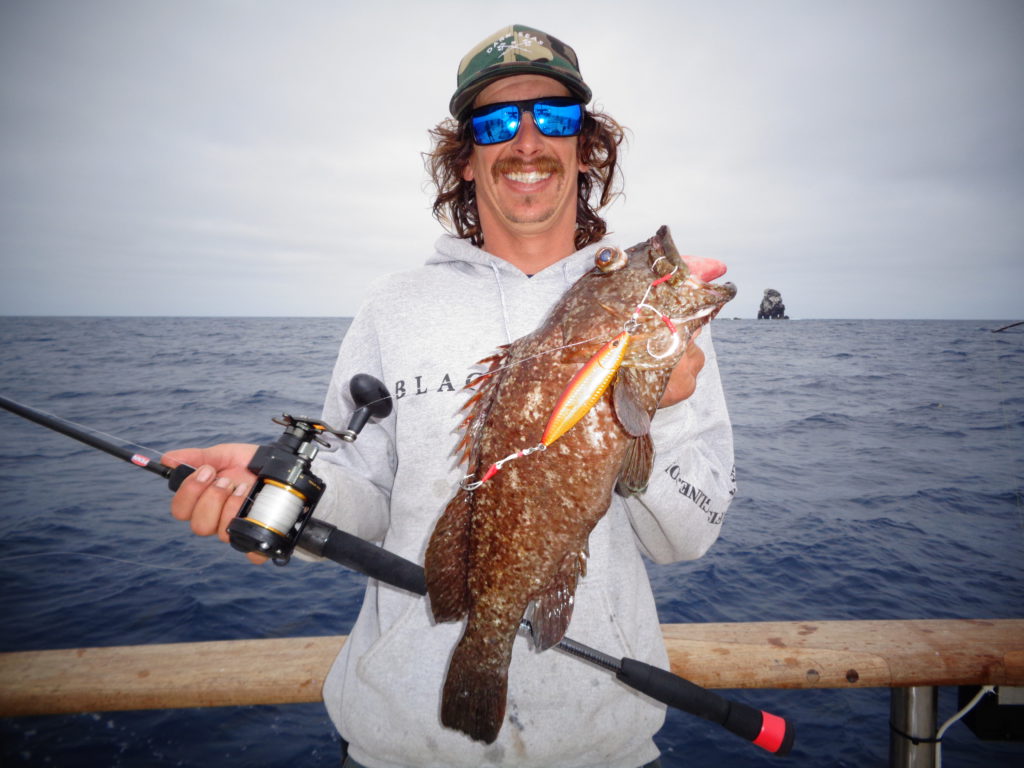
aficionado and shows that even exotic cabrilla love to hit them.
Line and leader
The main line on the reel will almost universally be high-quality braid like Berkley Pro-Spec solid. Leaders are still an evolving preference, and this writer currently likes a wind-on of about 20 feet, using monofilament about 10 or 20 pounds heavier than the braid, for abrasion resistance. In situations where line visibility may be an issue, fluorocarbon wind-ons may be preferable.
Go do it!
This technique is very new to SoCal and Baja anglers. No doubt many innovative variations will emerge as more experimentation takes place under more different fishing conditions. Have fun with it!



